
Transforming your hillside garden can be both fun and helpful. Use terraced beds to grow plants on slopes.
Add rock gardens for a natural look. Plant native flowers and trees that need little care.
Place garden art or small water features to make it special. These ideas help stop soil from sliding and save time.
Learn how to create your perfect hillside dream.
Tired of boring hills? Turn them into a colorful wonderland.
Try terraced beds for growing veggies and flowers. Add rocks and plants to stop slipping soil.
Need more ideas? Discover easy ways to make your hillside beautiful and strong.
Start today and watch your garden grow!
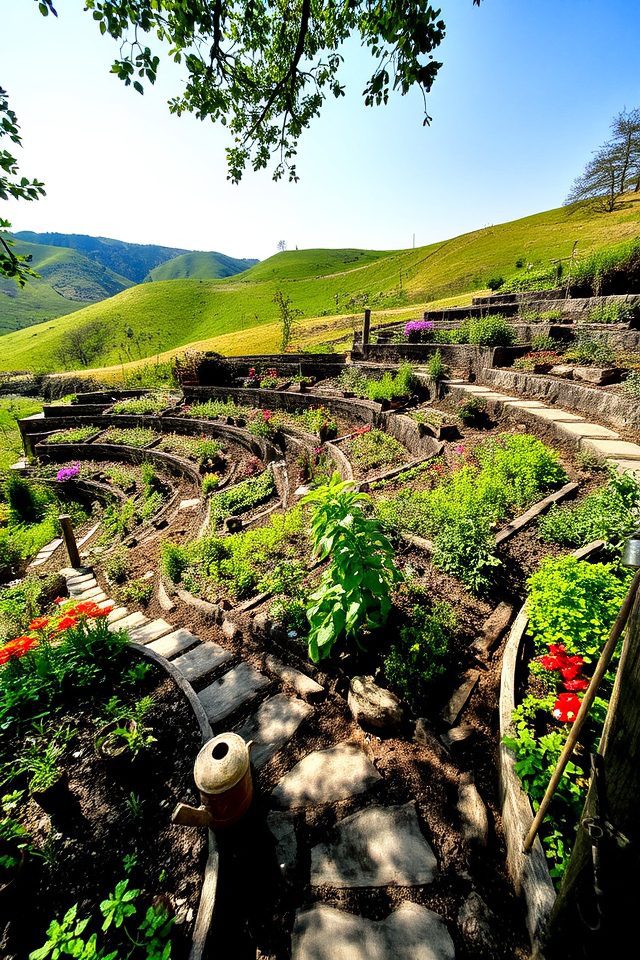
Terraced garden beds are an excellent solution for transforming sloped landscapes into productive and visually appealing spaces. By creating flat, leveled areas on various tiers, these garden beds help minimize soil erosion while maximizing planting opportunities. They can be constructed using materials like stone, wood, or brick, allowing for customization to fit your style. Additionally, terraced gardens facilitate better drainage and irrigation, making them ideal for growing a diverse array of plants, flowers, and vegetables on a hillside.
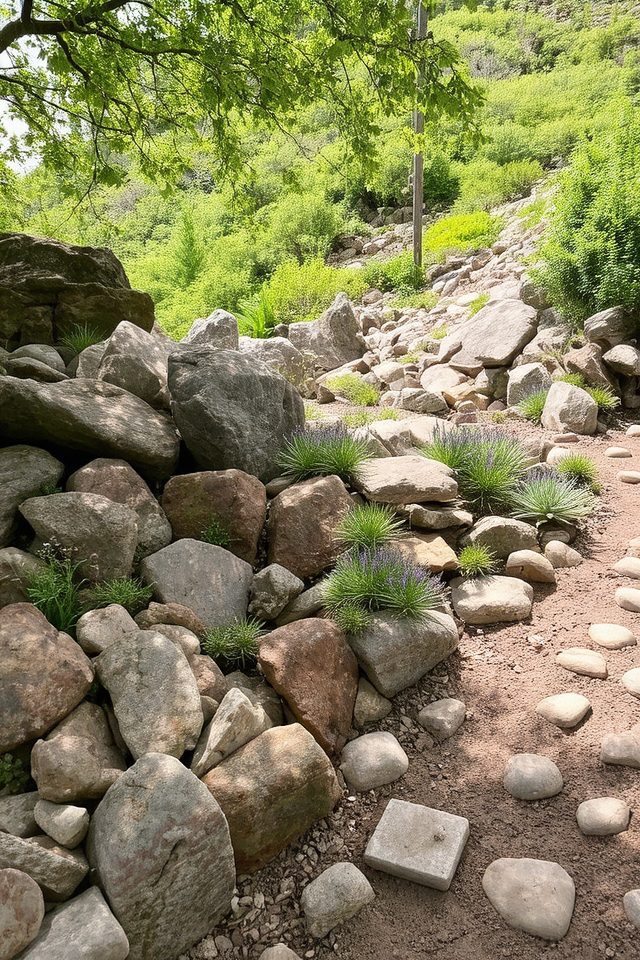
Rock gardens and boulders are excellent elements for transforming hillside landscapes, adding both visual interest and strategic erosion control. By integrating various sizes of stones and boulders, you can create stunning focal points that blend naturally with the environment. These gardens not only showcase drought-resistant plants nestled among the rocks but also promote drainage, preventing water runoff. With thoughtful placement, rock gardens can enhance the beauty and functionality of your hillside space.
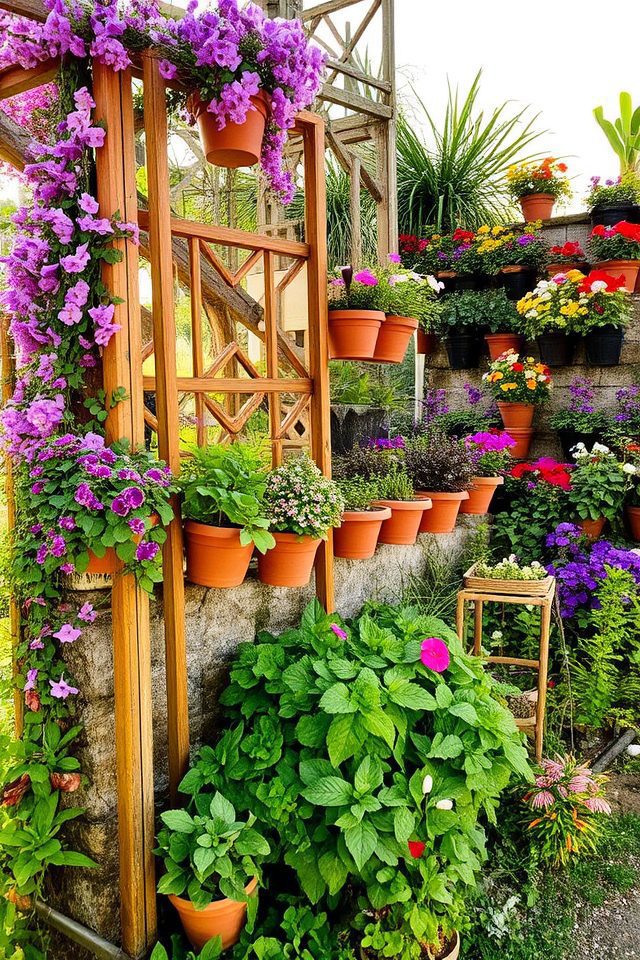
Vertical gardening solutions are an effective way to utilize limited space on hillsides while adding beauty and functionality to your landscape. By incorporating trellises, wall planters, or stacked planters, you can grow a variety of plants, from herbs to flowering vines, without taking up valuable ground space. These structures not only enhance visual interest but also help with soil erosion control, making them an ideal choice for sloped landscapes. Embrace creativity and sustainability with vertical gardening!
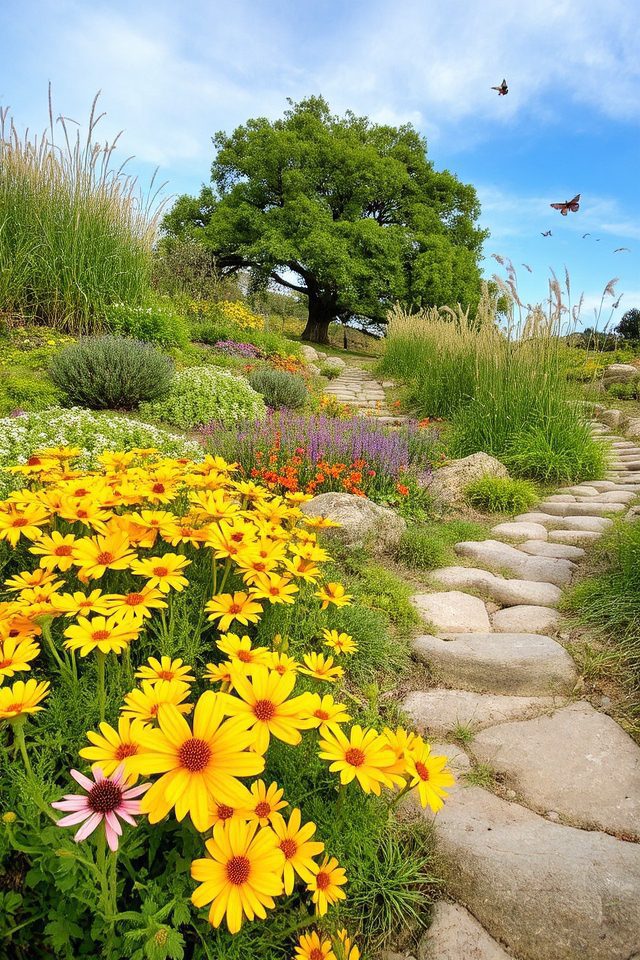
Native plant landscaping is an eco-friendly approach that emphasizes the use of plants native to the local region. These plants are well-adapted to the local climate, soil, and wildlife, making them resilient and low-maintenance options for hillside gardens. Incorporating native species not only reduces water and fertilizer needs but also supports local biodiversity by providing habitats for native birds, insects, and other wildlife. Transforming a hillside with native plants enhances both beauty and sustainability, creating a harmonious landscape that thrives naturally.
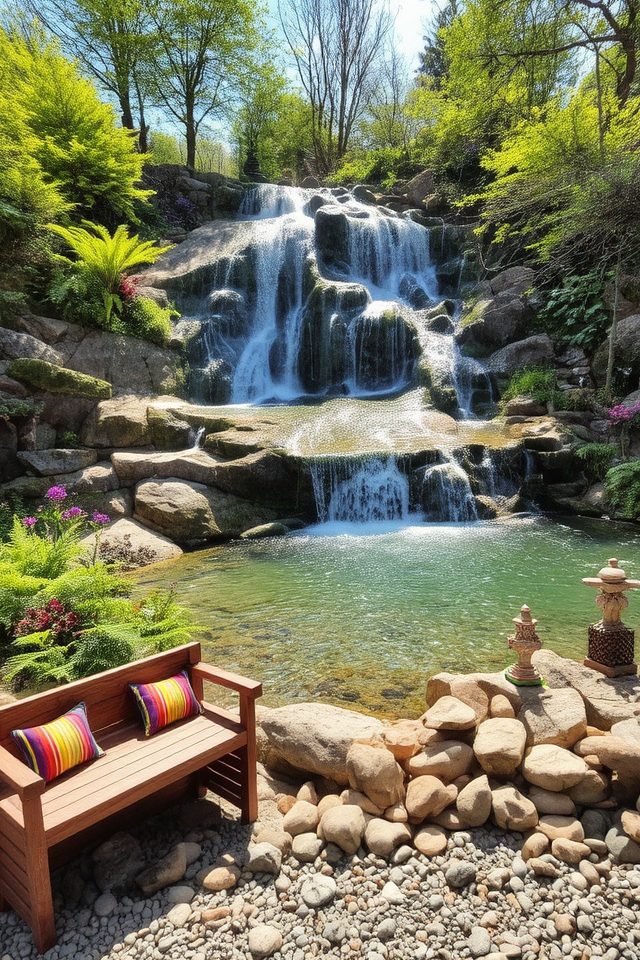
Water features and ponds can greatly enhance the beauty and tranquility of a hillside garden. Incorporating elements such as cascading waterfalls or serene ponds creates a soothing ambiance while also addressing drainage challenges on slopes. Native plants can be installed around these features to promote biodiversity. Additionally, the sound of flowing water adds a peaceful backdrop, making the garden an inviting space for relaxation and contemplation. Overall, these water elements can transform a hillside into a stunning oasis.
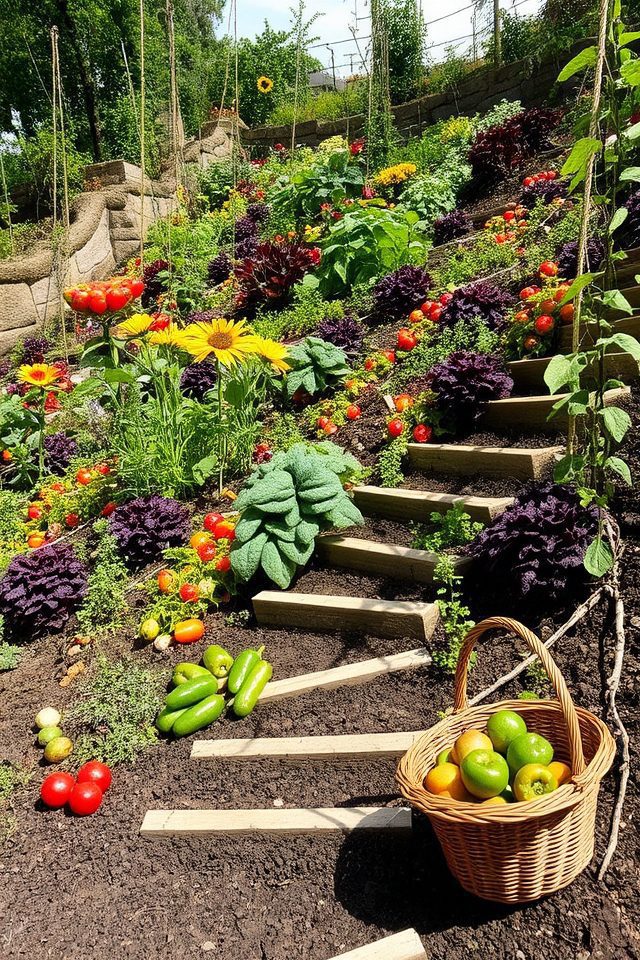
Edible hillside gardens offer a sustainable and productive way to utilize sloped terrain while enhancing biodiversity. By incorporating a mix of fruits, vegetables, and herbs, these gardens not only provide fresh produce but also contribute to soil erosion control. Techniques such as terracing and planting in raised beds can maximize space and reduce runoff. Choosing drought-tolerant plants and companion planting can further guarantee a thriving, low-maintenance garden that complements the natural landscape while nourishing your family.
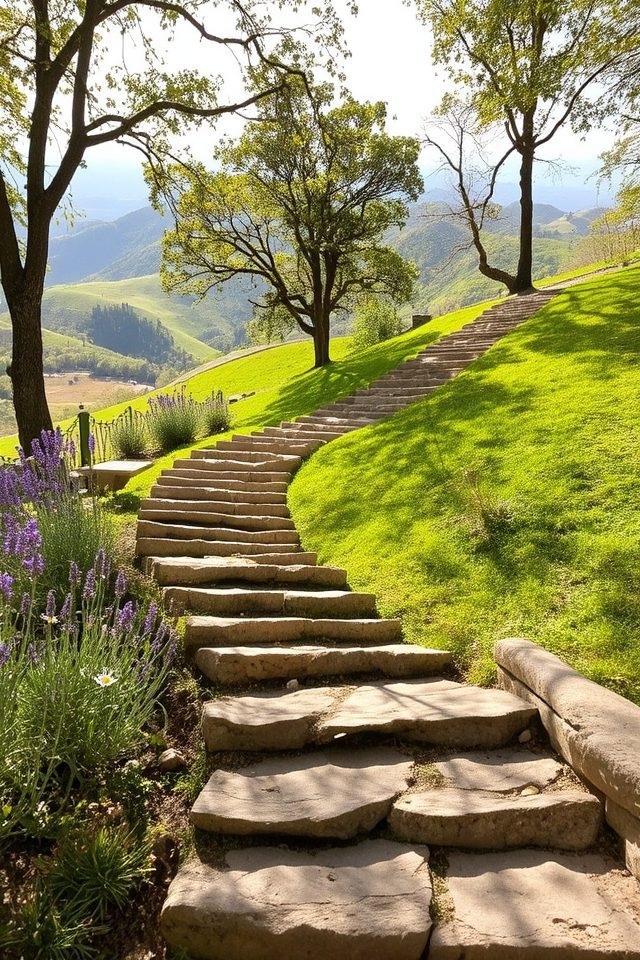
Stone steps and pathways are essential elements in hillside gardens, providing both functionality and aesthetic appeal. They create a safe and visually striking way to navigate slopes, preventing soil erosion while enhancing the landscape. Using materials such as natural stone or decorative pavers, these pathways can blend seamlessly with the environment. Incorporating plants along the edges adds softness and vibrancy, transforming steep areas into inviting walkways that encourage exploration and enjoyment of the surrounding beauty.
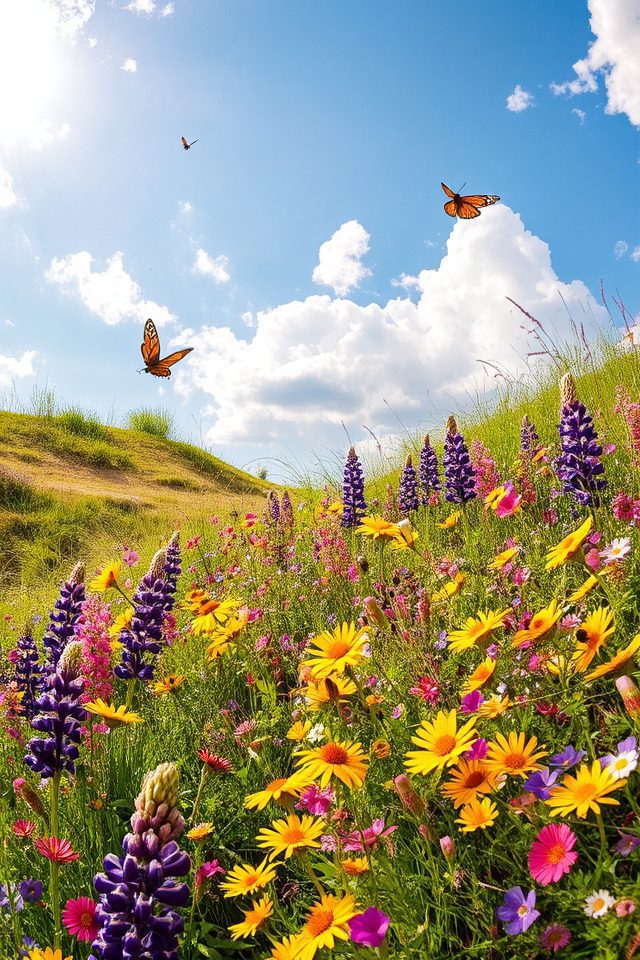
Wildflower meadows offer a vibrant and sustainable solution for hillside gardens. By planting a diverse mix of native wildflowers, you can create a stunning landscape that flourishes with color throughout the seasons. These meadows require minimal maintenance and provide essential habitats for pollinators such as bees and butterflies. With their ability to thrive in various soil types and slopes, wildflower meadows not only enhance the visual appeal of hilly areas but also promote biodiversity and soil health.
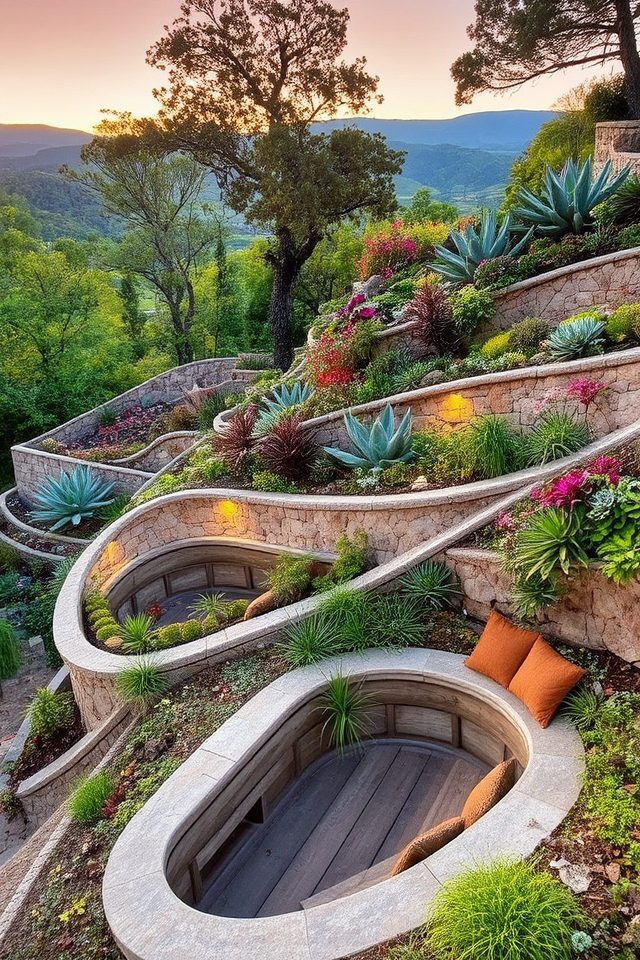
Retaining walls are essential for managing soil erosion and creating level areas in hillside gardens, but they can also be a design focal point. By incorporating materials like natural stone, timber, or decorative concrete, these walls can enhance the aesthetic appeal of your landscape. Adding vertical gardens, built-in seating, or lighting elements can further elevate the style, turning a functional structure into an integral part of your hillside transformation. Choose textures and colors that complement your overall garden theme for a cohesive look.
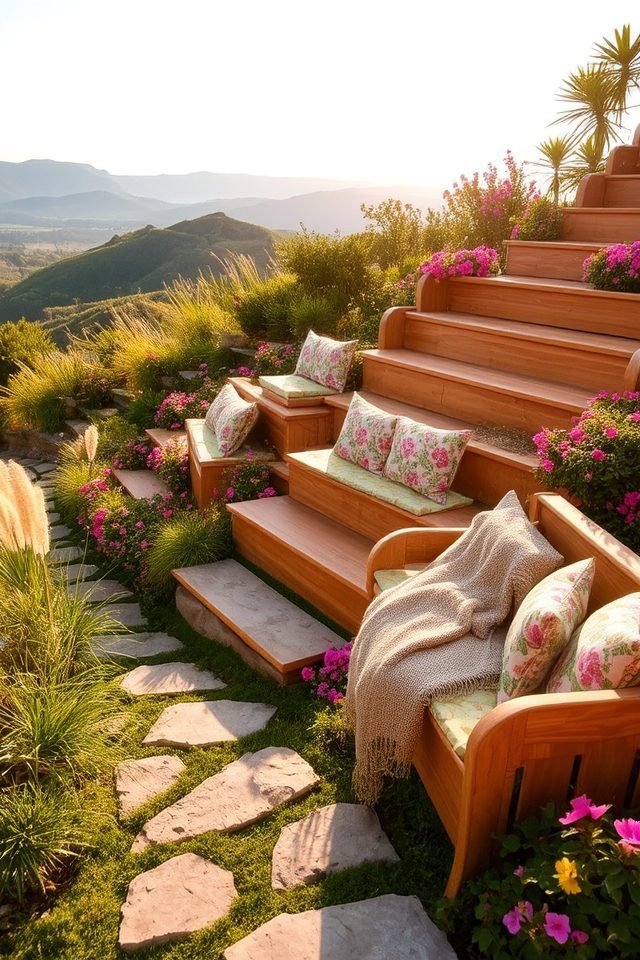
Creating outdoor seating areas on a hillside can enhance the beauty and functionality of your garden. Consider using terraced platforms or built-in benches that blend seamlessly with the landscape. Incorporate natural materials like wood and stone to create a harmonious look. Add cushions and throw blankets for comfort, and surround the space with lush plants and flowers to provide privacy and a touch of nature. These areas not only offer a stunning view but also serve as inviting spots for relaxation and gatherings.
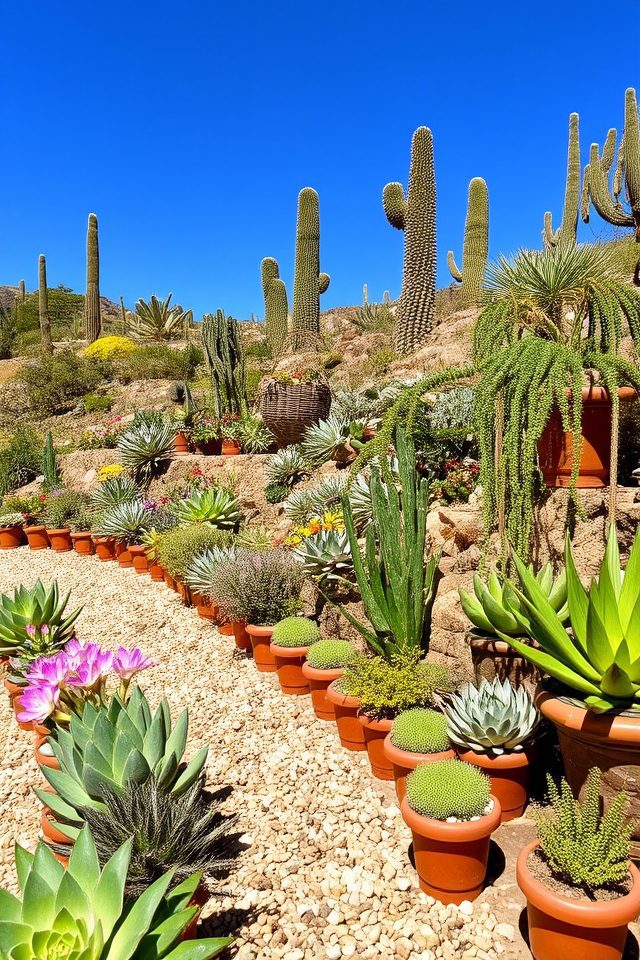
Succulent and cacti arrangements are perfect for hillside gardens due to their low maintenance and drought-resistant nature. These hardy plants come in various shapes, sizes, and colors, allowing for creative and visually appealing displays. Arrange them in terracotta pots, hanging baskets, or even directly in the ground with gravel accents to enhance the landscape. Their resilience makes them ideal for sloped areas, providing texture and interest while requiring minimal watering and care.
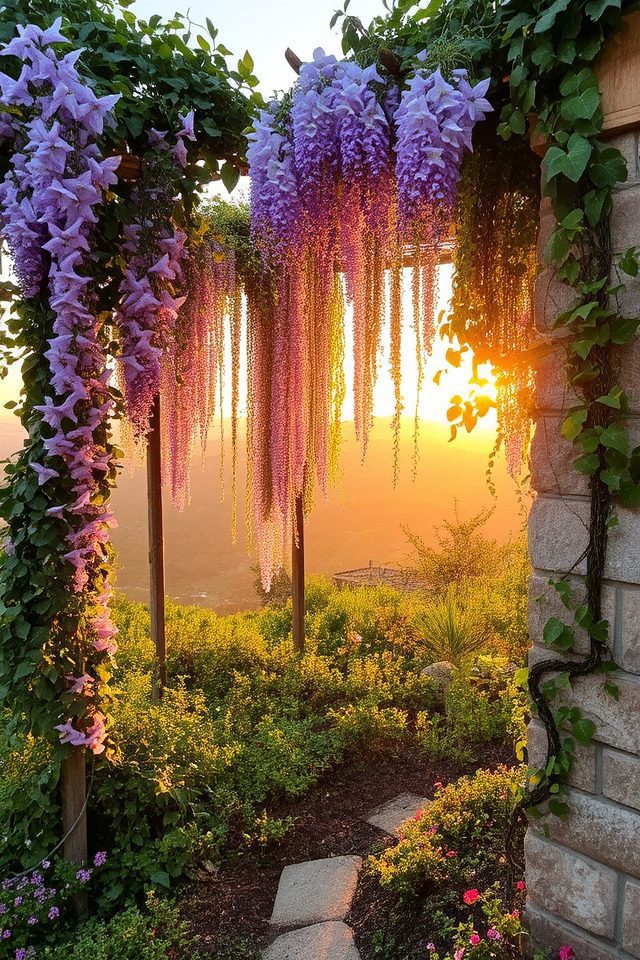
Climbing plants and vines are perfect for enhancing hillside gardens, as they add vertical interest and maximize space. Varieties like clematis, wisteria, and honeysuckle can drape gracefully over trellises, arbors, or rocky outcrops, creating stunning focal points. These plants not only provide lush greenery but also attract pollinators and create a microclimate, improving the overall ecosystem. Incorporating them into your hillside design can transform bare slopes into vibrant, textured landscapes.
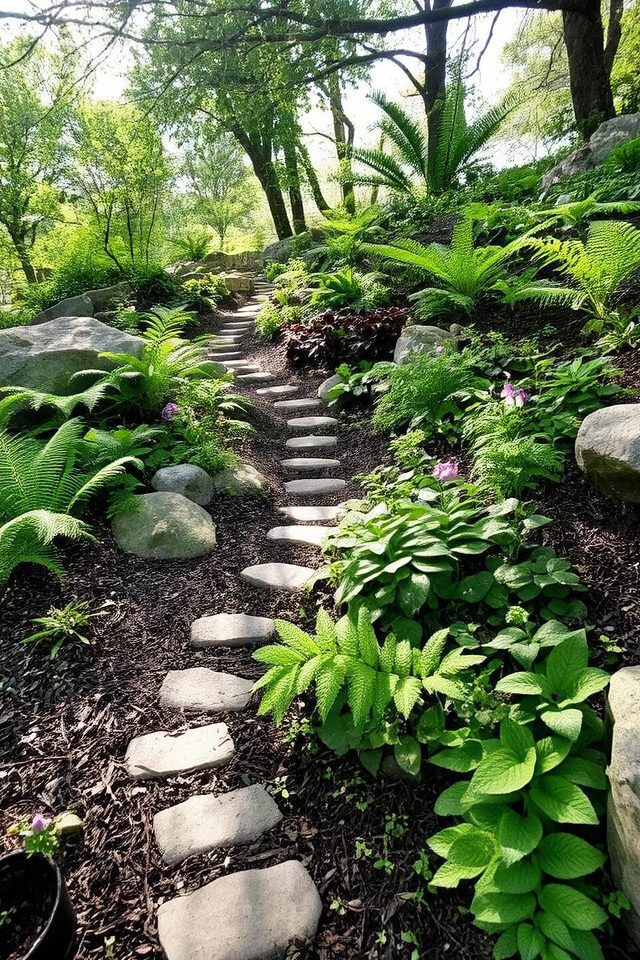
Shade gardens on steep slopes can be a stunning way to maximize difficult terrain while creating a tranquil retreat. Utilize shade-tolerant plants, such as ferns, hostas, and hellebores, to thrive in lower-light conditions. Incorporate mulch to retain moisture and control erosion, while adding pathways or boulders for visual interest and accessibility. A well-designed shade garden can transform a steep slope into a lush, inviting space filled with diverse textures and colors.
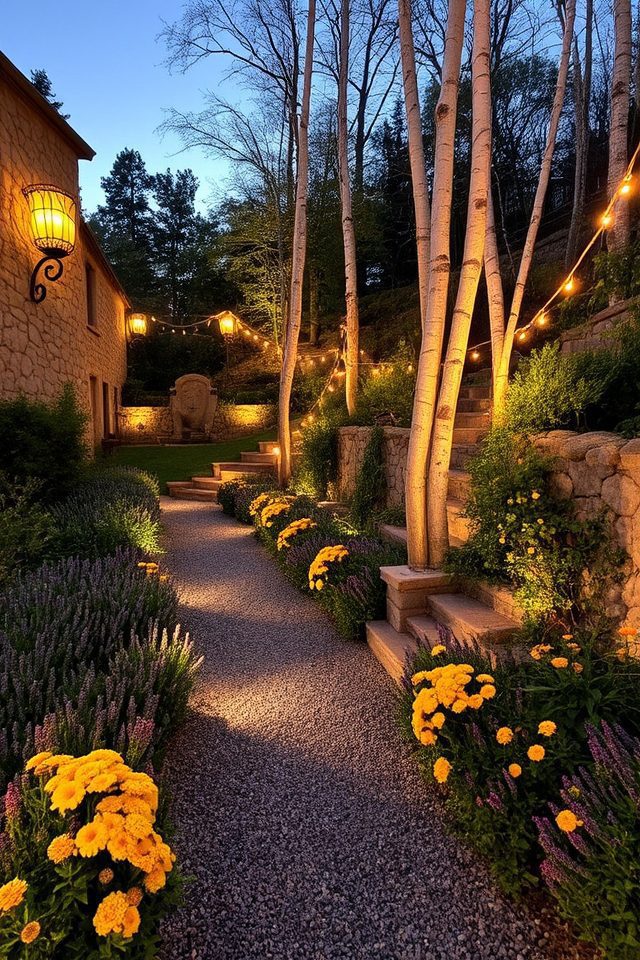
Garden lighting can dramatically enhance the beauty and safety of hillside gardens. Consider using solar-powered LED lights along pathways to guide visitors at night. Wall-mounted sconces can illuminate terraced areas, creating a cozy atmosphere while highlighting your landscaping features. String lights draped between trees or along railings add a whimsical touch. For focal points, spotlights can illuminate statues or unique plants, transforming your hillside garden into a magical retreat after sunset.
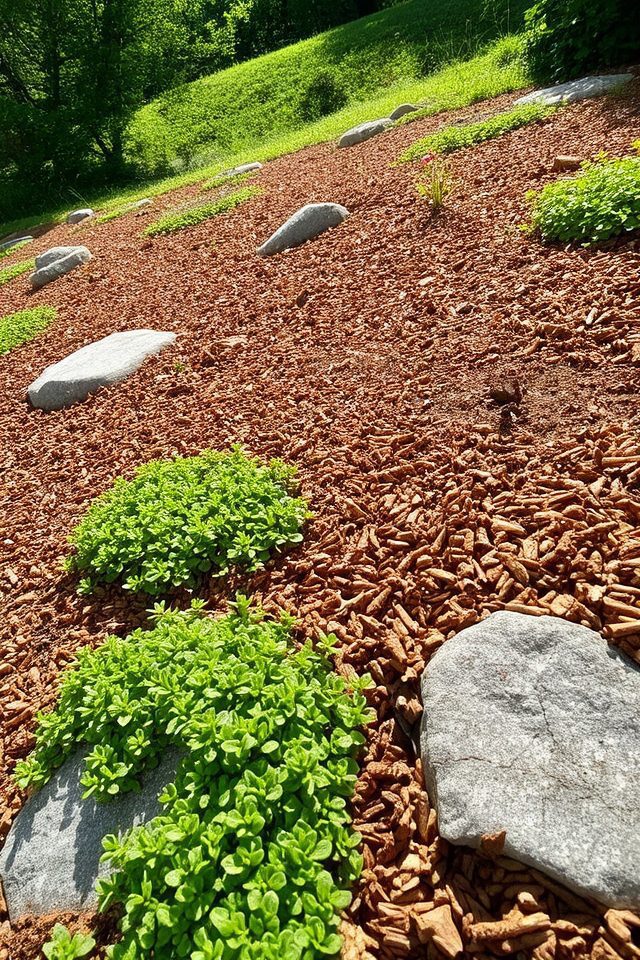
Decorative mulch and ground cover are essential elements for enhancing hillside gardens. Mulch, available in various colors and textures, not only suppresses weeds but also retains moisture and adds visual appeal. Ground cover plants, such as creeping thyme or sedum, help stabilize soil on slopes while creating a lush, vibrant carpet. Together, they reduce erosion, promote healthy ecosystems, and provide a stunning backdrop for other garden features, turning challenging terrains into beautiful landscapes.
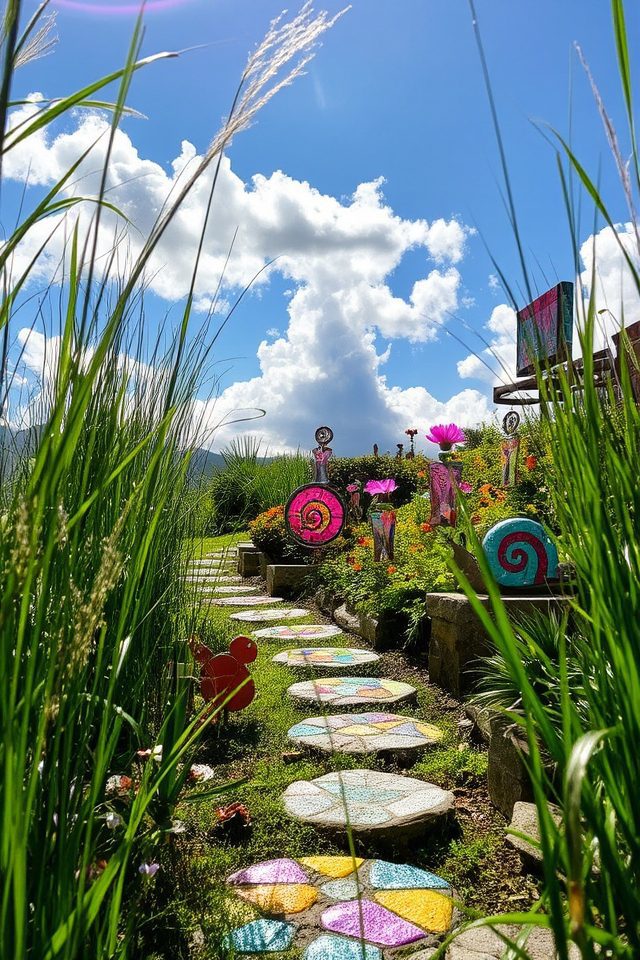
Whimsical garden art can transform a hillside garden into a playful paradise. From colorful metal sculptures to quirky wind chimes, these creative pieces add personality and charm. Incorporating items like mosaic stepping stones or painted garden stakes not only enhances the visual appeal but also invites curiosity and delight. Use unexpected materials like recycled metals or reclaimed wood to craft unique installations that celebrate nature and ignite the imagination, turning your hillside into an enchanting retreat.
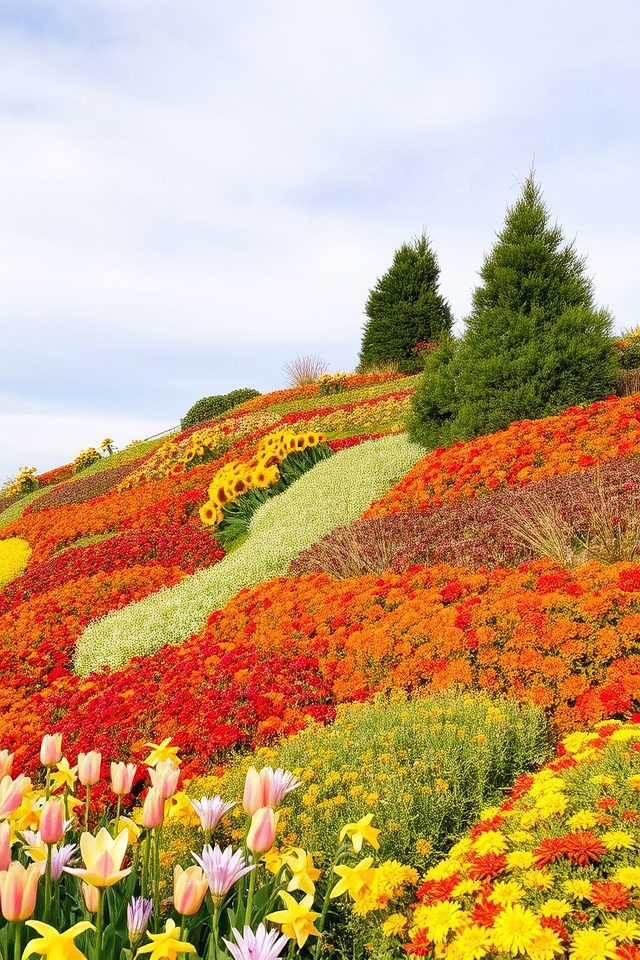
Seasonal color schemes are essential for enhancing the aesthetic appeal of hillside gardens throughout the year. Each season brings its own palette, allowing gardeners to create vibrant displays. In spring, pastel tulips and cheerful daffodils bloom, while summer showcases bold colors with zinnias and sunflowers. Autumn invites rich hues of golds and reds with chrysanthemums and ornamental grasses, and winter can be brought to life with evergreen shrubs and colorful berries. Thoughtfully planning these changes guarantees a stunning and dynamic landscape all year long.
As you breathe life into your hillside garden, remember that each plant and stone is a brushstroke on your canvas of tranquility. From terraced beds that hug the slopes to whimsical art that dances in the breeze, every detail transforms your space into a vibrant retreat. Embrace the rhythm of nature, and let your garden evolve through the seasons, weaving a tapestry of beauty that invites relaxation and ignites your creativity. Your hillside haven awaits!

Don't let aphids, slugs, and caterpillars ruin another plant. Take back control with simple, natural methods that actually work.